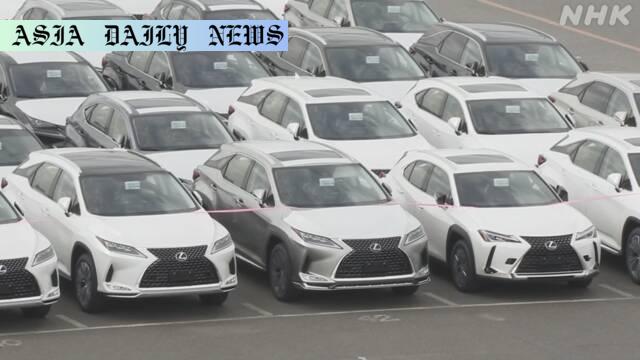Tariffs force Japanese automakers to adapt production plans for US market, balancing output shifts and market uncertainties.
Tariffs push Japanese automakers to shift production to the US.
High labor costs and sourcing difficulties remain core challenges.
Toyota decides to freeze price hikes for the US market.
Mitsubishi adopts a cautious ‘wait-and-see’ approach.

Tariffs Force Japanese Automakers to Rethink Strategies
The recent imposition of an additional 25-percent tariff on automobile imports by the United States has placed significant pressure on Japanese carmakers. In an effort to mitigate the financial impact of these tariffs, major automakers are altering their production strategies. For instance, Nissan has reversed its earlier decision to reduce output in Tennessee, opting instead to maintain previously planned production levels of SUVs. Simultaneously, the company is cutting output in Fukuoka Prefecture, Japan, by over 10,000 vehicles during a three-month period starting in May. These moves highlight the complex balancing act that automakers face, as they strive to absorb higher costs while ensuring consistent market supply.
Honda Looks to Indiana for Hybrid Sedan Production
Honda Motor is another major player undergoing a geographical shift in its production strategy. The company plans to relocate the production of select hybrid sedan models from Saitama Prefecture, north of Tokyo, to Indiana in the United States. This decision reflects an attempt to circumvent tariffs by increasing local production, although it poses its own set of challenges. Sourcing parts locally, rising labor wages, and hiring skilled workers form the crux of these challenges, making the relocation both a strategic necessity and a logistical puzzle.
Mixed Strategies Among Automakers
Other automakers are responding differently to the tariff situation. Mitsubishi Motors, for instance, has adopted a cautious stance, opting to temporarily halt customs clearance for vehicles exported from Japan to the United States. The company continues to wait for clearer policy directions before making definitive moves. Meanwhile, Toyota Motor has decided not to raise vehicle prices in the United States for now, citing existing inventory levels as a buffer against immediate cost escalation. This decision underscores Toyota’s commitment to safeguarding both Japanese employment and its U.S. market presence, albeit at a potential cost to profitability in the short term.
Challenges in the Transition
Despite these adaptive measures, shifting production to the United States is far from straightforward. Automakers face high labor costs, the need for reliable local suppliers, and recruitment challenges. In addition, transitioning assembly lines and supply chains requires extensive preparation, at times delaying the benefits of such a strategic move. For Japanese automakers, the tariffs have become a catalyst for change, compelling them to rethink not just production strategies but also their broader engagement with the U.S. market.
Broader Implications for Global Trade
The ripple effects of these decisions extend beyond the automotive sector to global trade dynamics. The imposition of tariffs serves as a stark reminder of the evolving nature of economic policies in major markets like the United States. It underscores the vulnerability of global supply chains to political decisions, forcing companies to consider regional production hubs as a way to safeguard against similar risks in the future. While Japanese automakers are focusing on short-term adjustments, the long-term implications of these shifts could redefine how international businesses approach the U.S. market, highlighting the increasing importance of flexibility and resilience in global operations.



Commentary
Understanding the Shifting Strategies of Japanese Automakers
Japanese automakers are navigating a period of profound change, largely influenced by unpredictable U.S. tariff policies. The decision by the U.S. government to impose a steep 25-percent tariff on automobile imports has posed a direct challenge to the operational and financial frameworks of these companies. Production shifts to the United States, though strategic, are not without their complexities, including rising operational costs and regional hiring challenges.
The Balancing Act Between Cost and Market Presence
One of the most fascinating aspects of this development is how automakers like Nissan and Honda are balancing cost efficiencies with market presence. Increasing local output in the United States may offer temporary relief from tariffs, but it is by no means a cost-efficient solution. High labor costs and supply chain dependencies pose significant hurdles. Moreover, companies like Toyota are taking a calculated risk by refusing to pass on added costs to consumers, choosing instead to maintain their competitive edge in the U.S. market.
Broader Implications for Global Trade
This scenario serves as a critical example of how global trade policies can compel companies to revamp their long-standing strategies. Japanese automakers’ responses to tariffs are not just about safeguarding profits but also about reimagining their global supply chains for a future where economic nationalism could play a larger role. Their strategic adaptations may set a precedent for how other companies approach such challenges, making this an insightful case for both industry observers and policymakers.